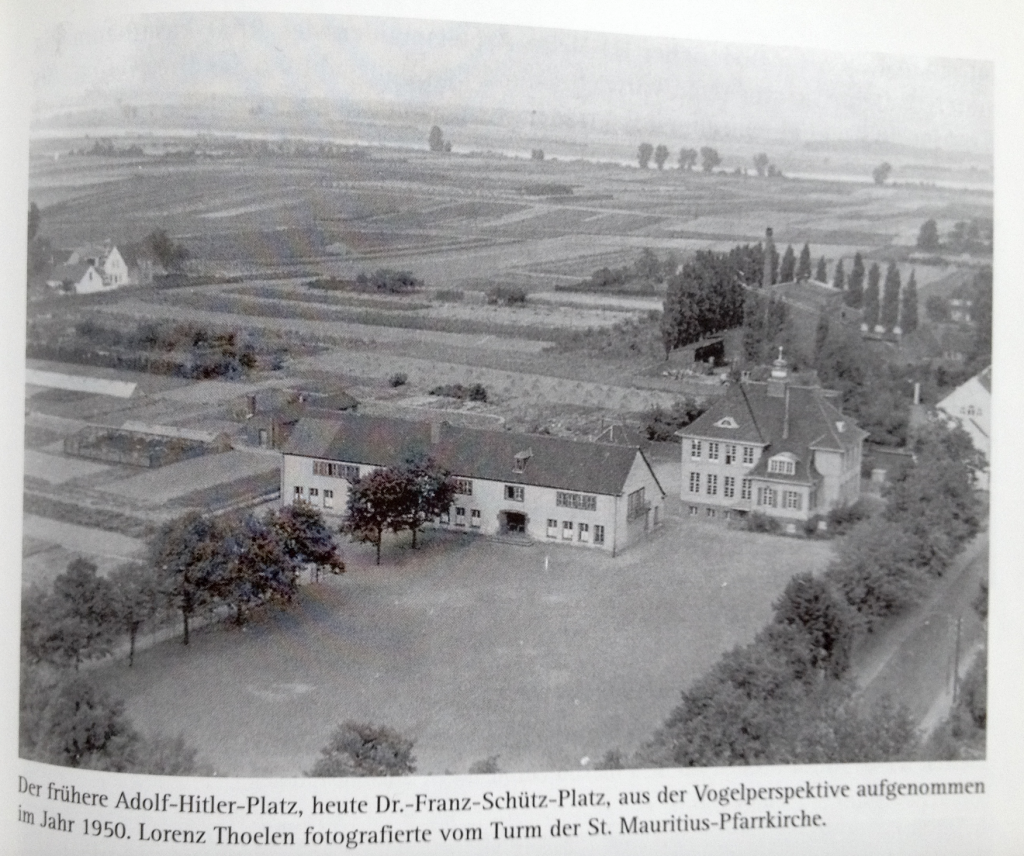Some people favour geraniums and hanging baskets, others prefer wind-chimes and gnomes. My favourite Meerbusch balcony has gone for the full Jurassic Park effect. I doff my cap to you, dear Dinosaur-balcony-family! Your outdoor paradise is awesome.
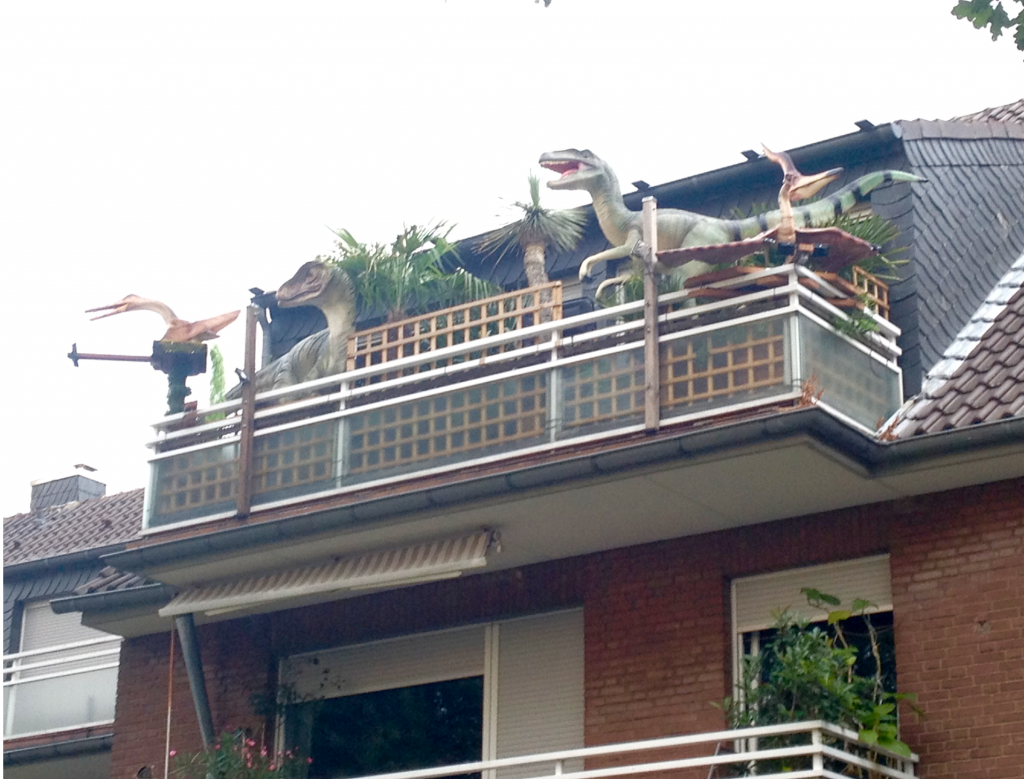
The Devil's Missal by Cathy Dobson
Some people favour geraniums and hanging baskets, others prefer wind-chimes and gnomes. My favourite Meerbusch balcony has gone for the full Jurassic Park effect. I doff my cap to you, dear Dinosaur-balcony-family! Your outdoor paradise is awesome.

Just look at this lovely Rhine landscape painting by Dr. Charlotte Boller-Dörper showing the scenery around Meerbusch-Büderich. Some parts of the flood plain are still common land and shepherd are permitted to graze their flocks there. You sometimes even see them in Düsseldorf near the Oberkassel bridge.
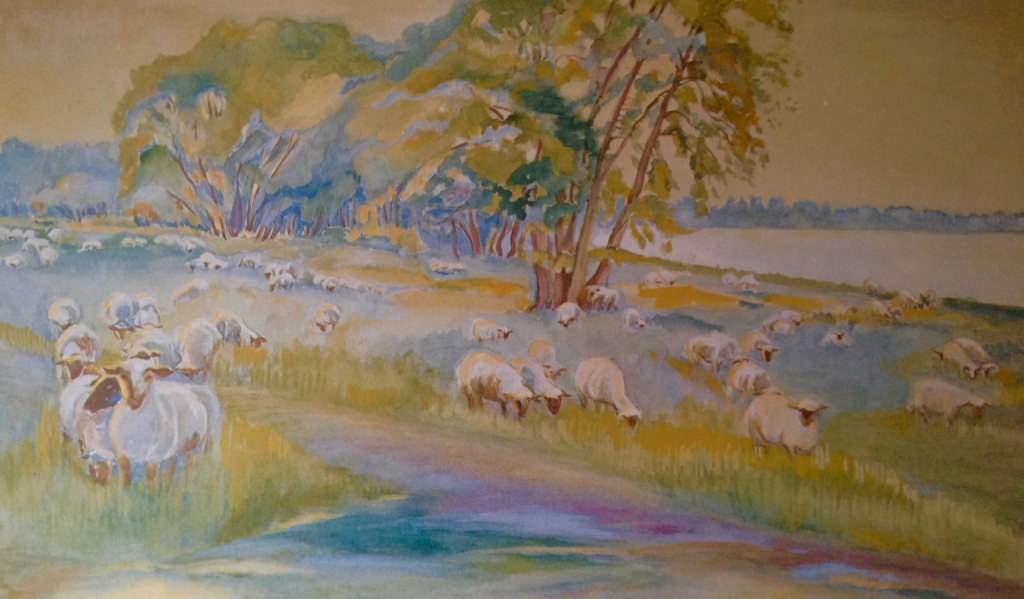
At the entrance to the cemetary in Büderich, just to the right as you go in, there is a memorial sculpture by Peter Rübsam, erected in 1988, consisting of seven basalt pillars, each with a bronze plaque in front of it. On each plaque is written one word: Dachau, Buchenwald, Theresienstadt, Riga-Kaiserswald, Treblinka, Maidanek, Auschwitz
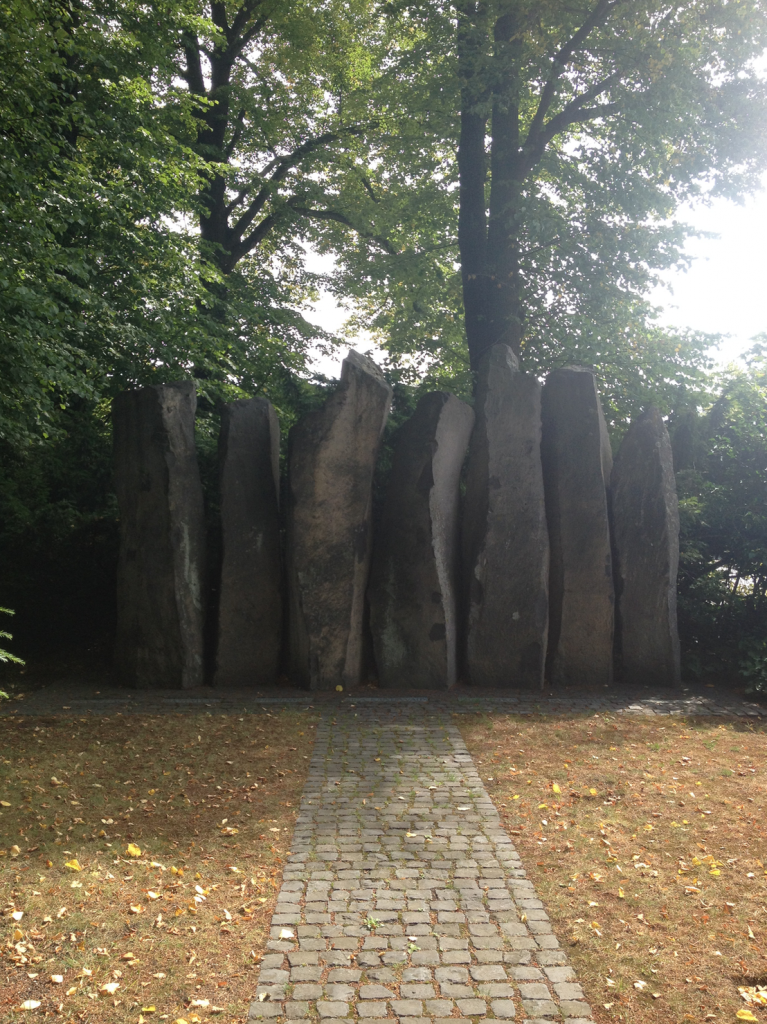
I wanted to share a few images from today at Haus Meer, the former convent of which very little now remains apart from the grand entrance. When the sun is hot, the long shady tree-lined avenues are gloriously refreshing to walk through.

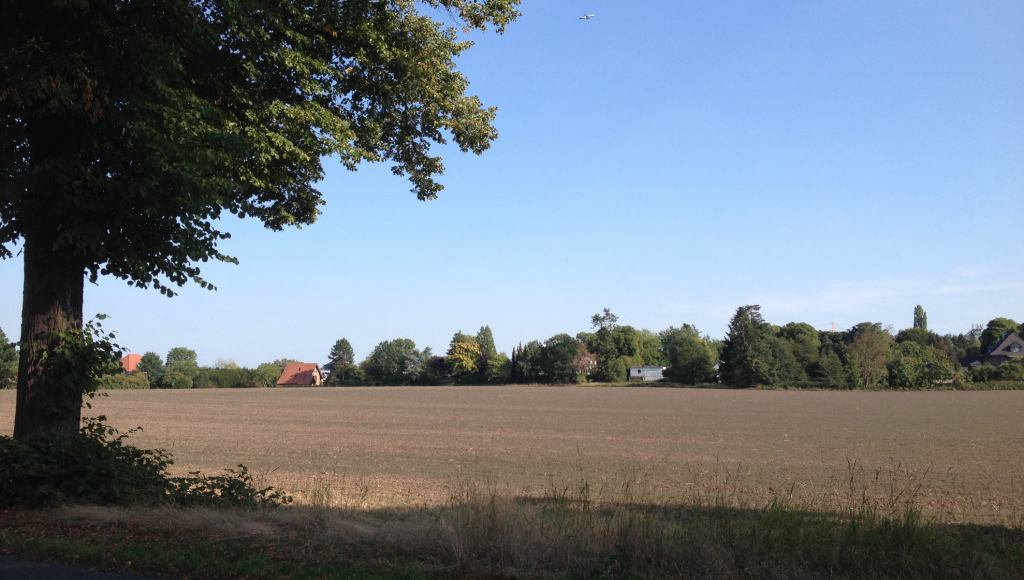
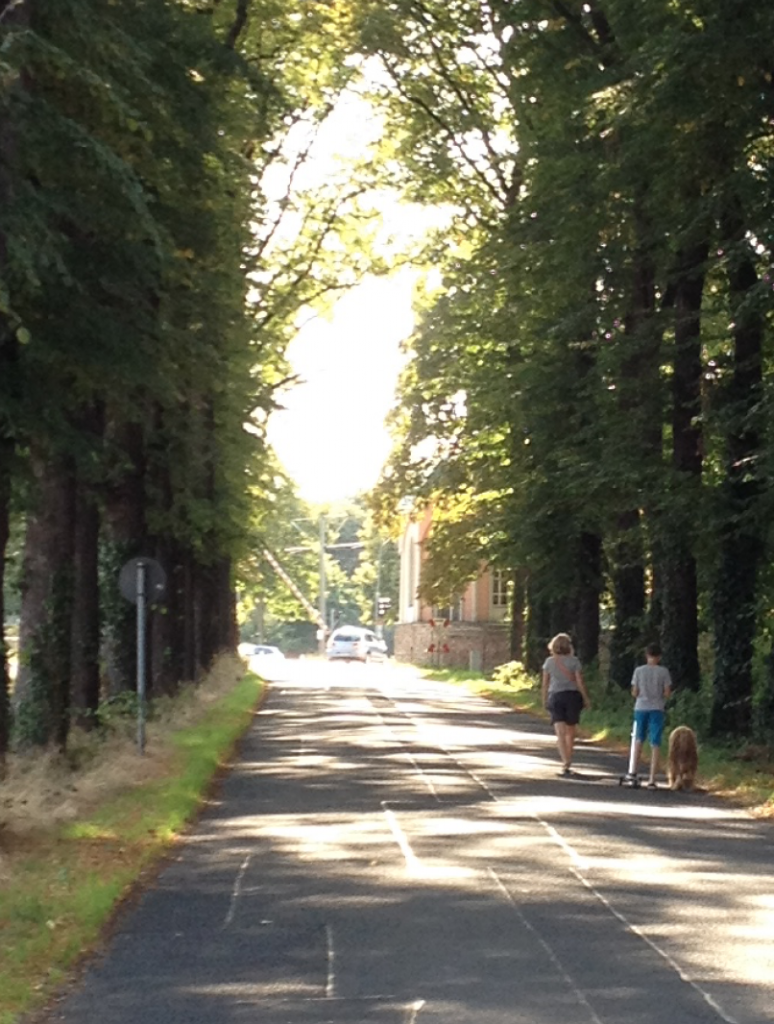
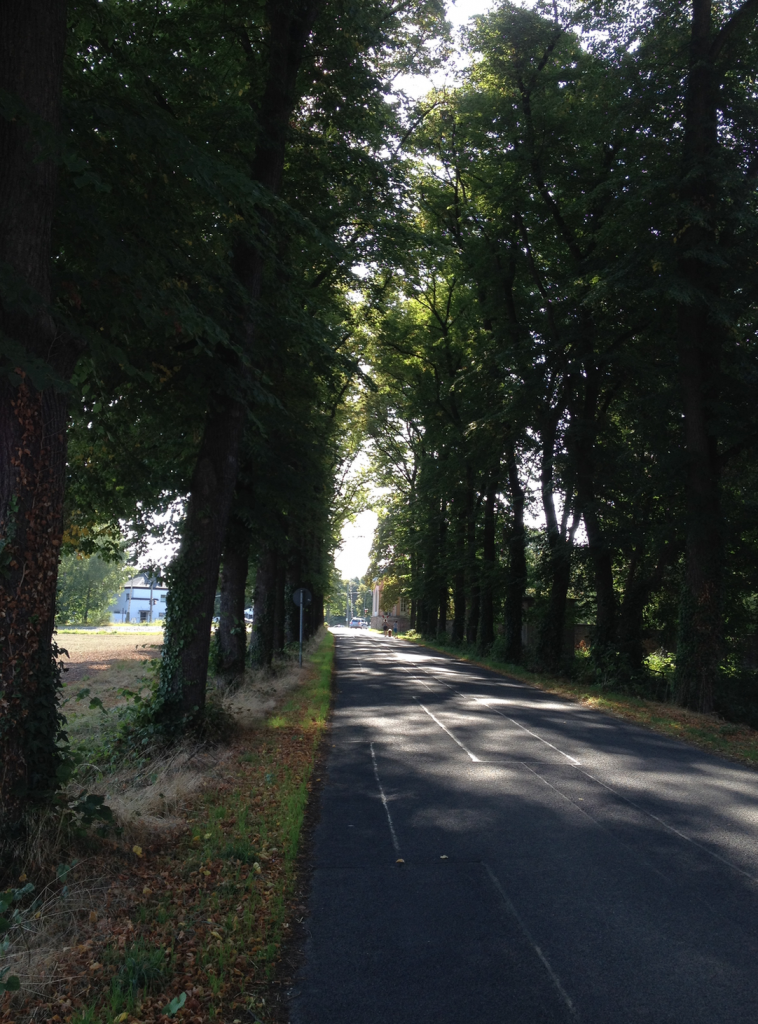
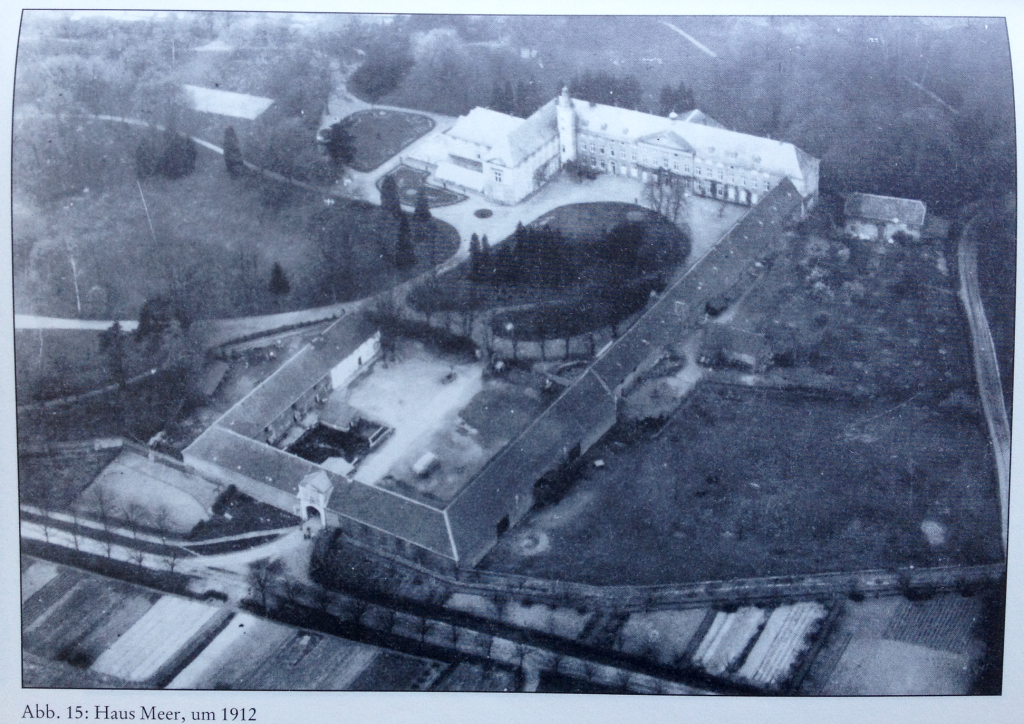
While collecting stories about Meerbusch, sometimes you stumble upon one which is unbelievably poignant.
In the cemetery in Meerbusch-Büderich is a memorial to the local civilian victims of two world wars as well as one unknown soldier. The monument was designed as a warning to the population, never to let such terrible wars recur. The sculpture by Adolf Westergerling is a conical column topped by a raised warning finger. It was erected in 1959.
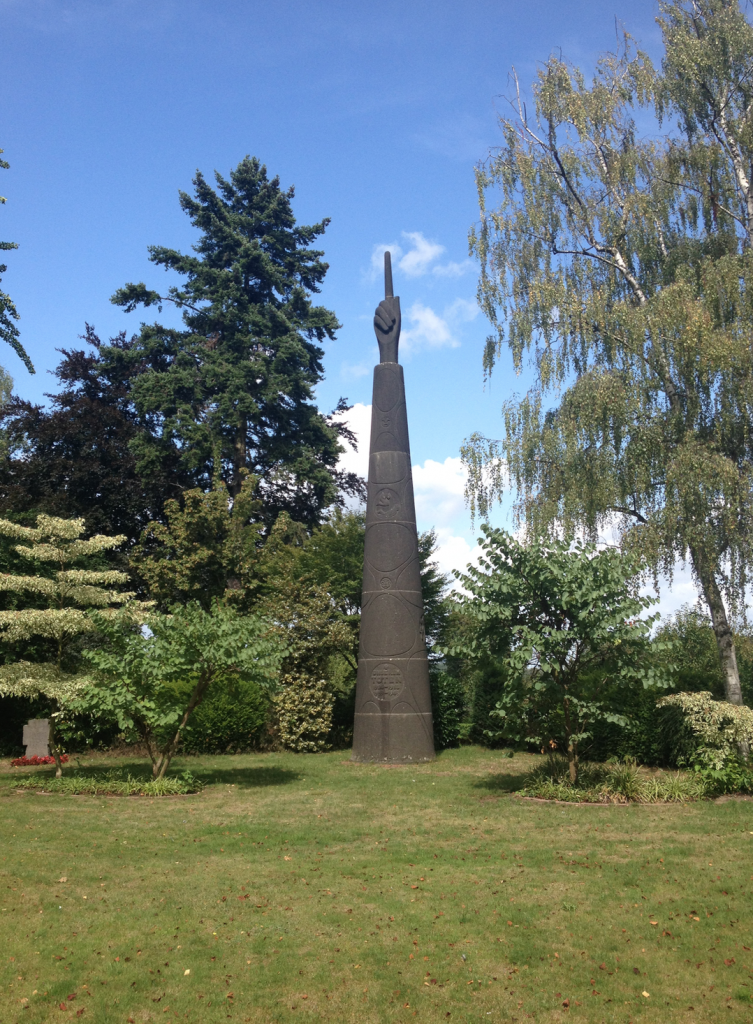
Around it, in the form of stone crosses are twenty memorials to the thirty-seven civilians who died in Meerbusch-Büderich during the conflicts. Perhaps the most bitter of all of these are the headstones for three children, all of whom lived at the end of the Nordstrasse and all of whom died on May 20th 1945.
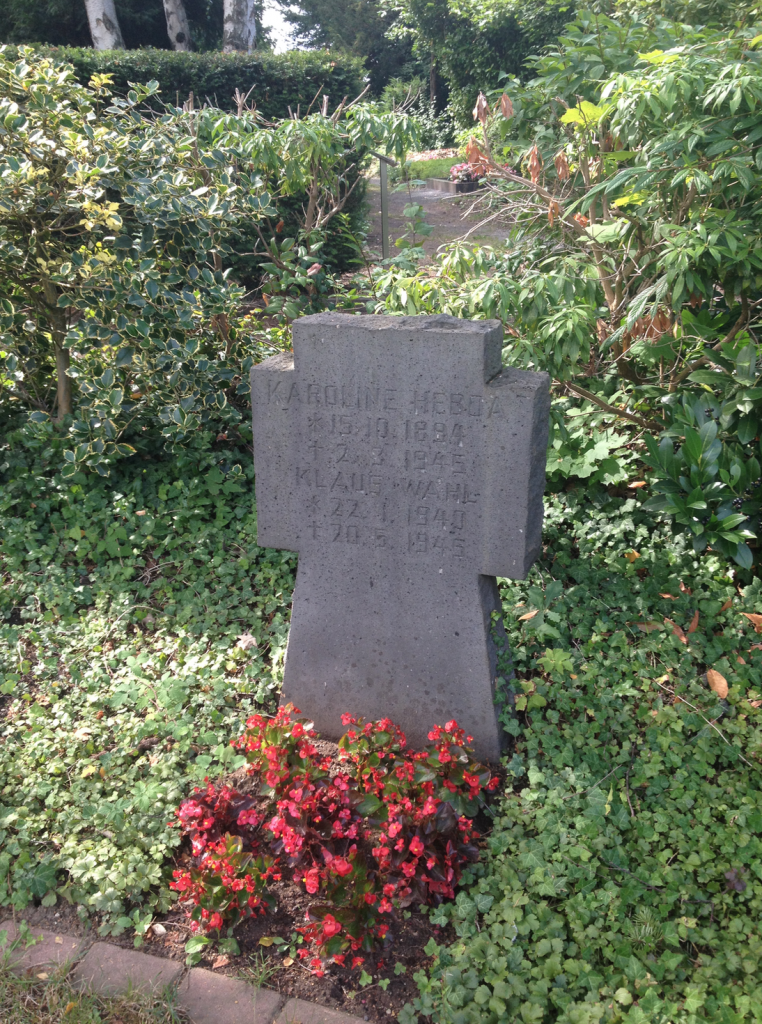
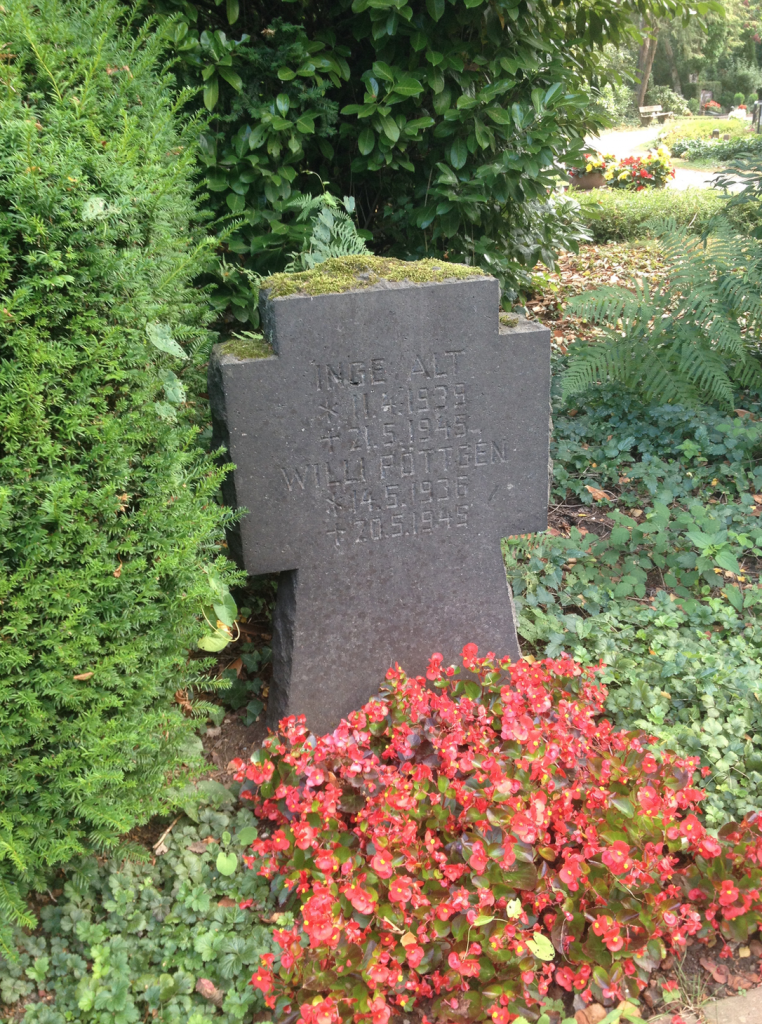
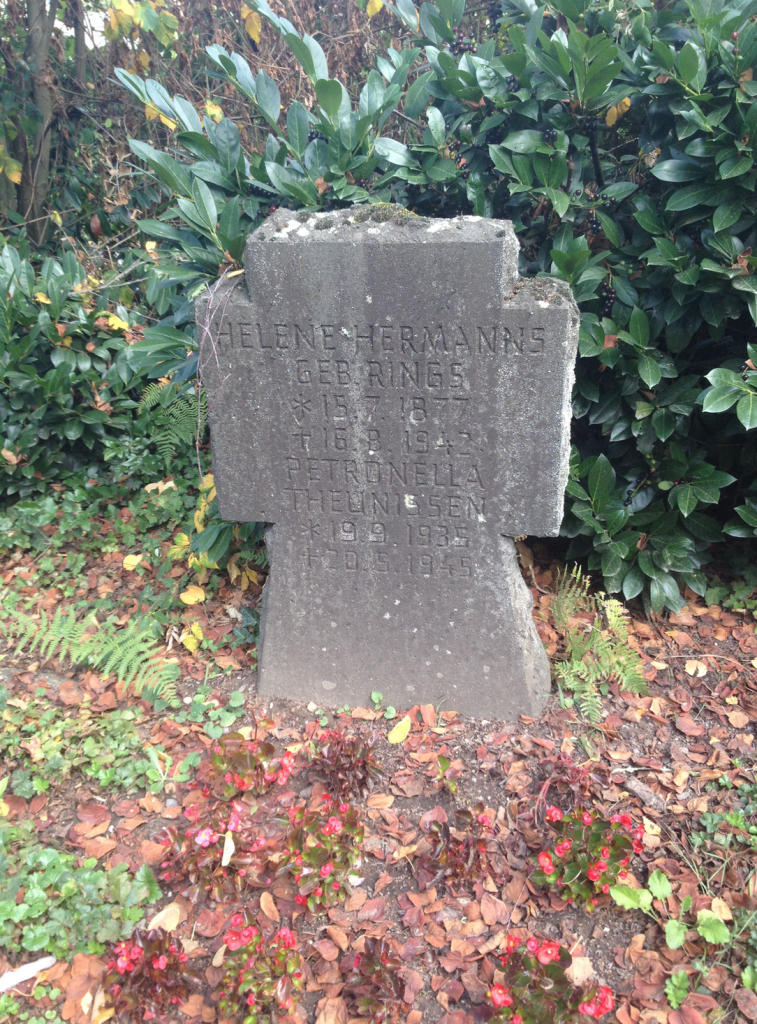
These children’s deaths are particularly tragic, not only because of their young age. At the time they died in May 1945, the fighting in Meerbusch was already over. A month earlier as the US army had passed through, the local German population had been evacuated from Meerbusch to villages to the south and west (mainly Heerdt and Willich) while the battle to cross the Rhine continued. By May the advancing army had passed through and the Meerbuschers had been allowed to return to their homes.
They came back to a scene of some devastation. The army of occupation had made free with provisions and possessions in the private homes they had occupied for a month. Bombardment from the opposite side of the Rhine had caused considerable destruction, as had explosions from booby traps and mines, such as the one which crippled a Sherman tank next to the Böhlerwerk.
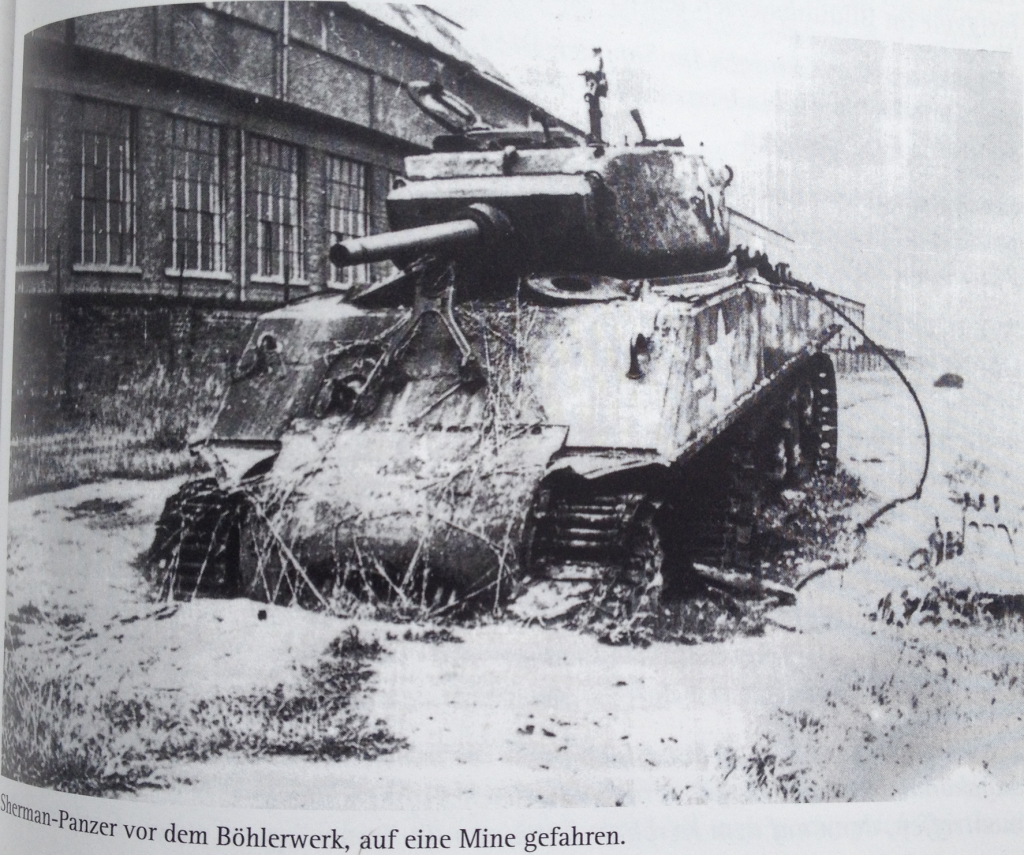
It was to this environment that Klaus Wahl, Willi Pöttgen and Petronella Theunissen returned to where they lived behind the Böhlerwerk on the Nordstrasse. On the 20th May the three young neighbours were exploring together outdoors when they discovered a new toy to play with. Tragically the ‘toy’ turned out to be a live grenade which exploded in their hands, killing them outright. They were the last casualties of world war two in Meerbusch.
Do you ever, like me, look at one of those onion shaped domes and wonder how on earth you construct one? The tower at Gut Dyckhof for example.
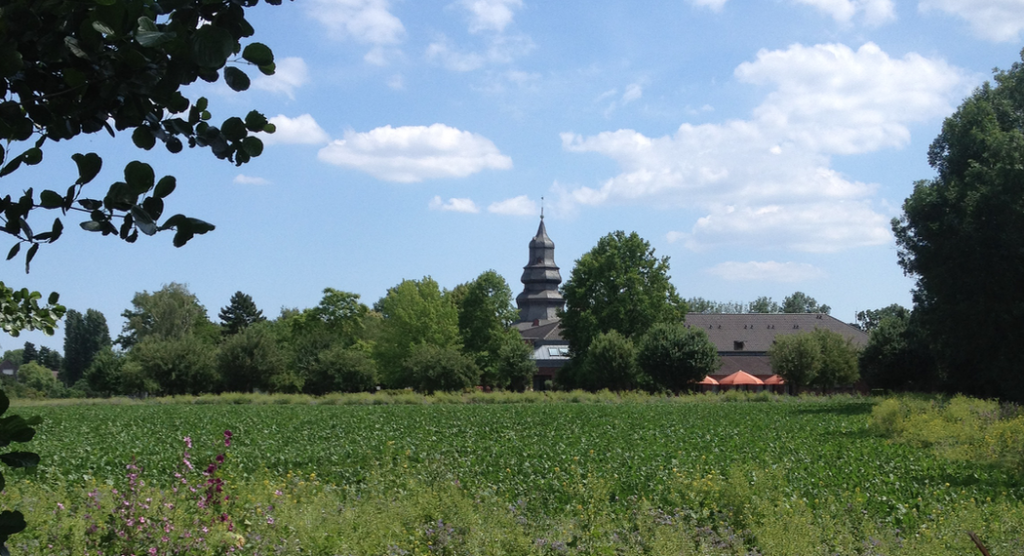
As it happens, this particular tower was renovated in 1939 and there are photographs and architectural plans which show how it was constructed.
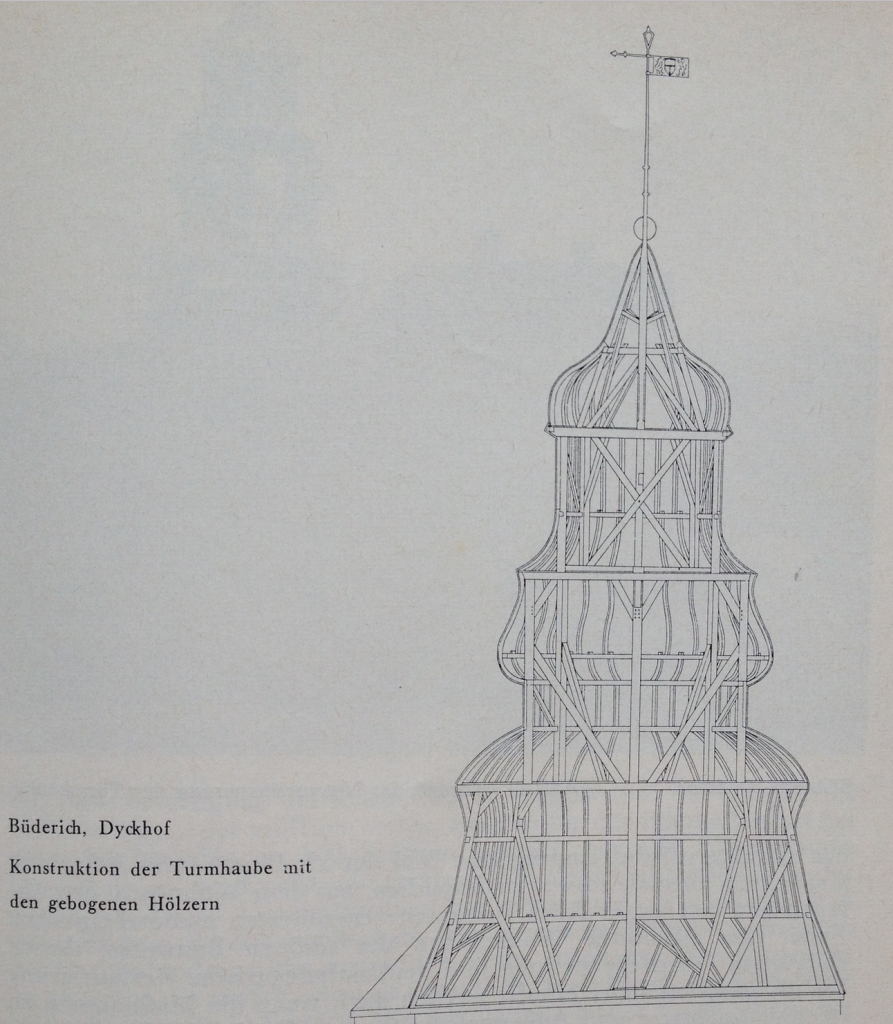
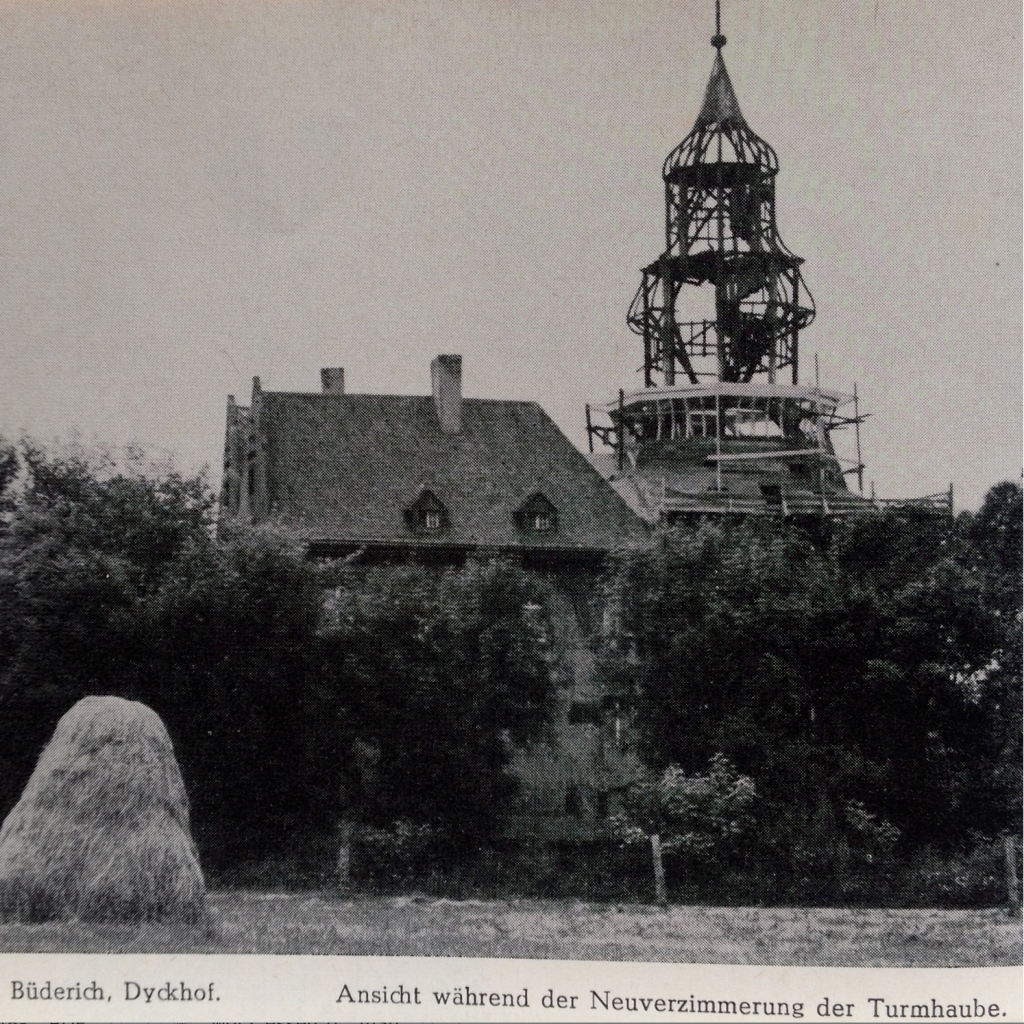
Of course, the roof-slates are held on by magic, obviously.
One of the questions readers frequently ask is where do I write. Physically that is. Which seat is my backside attached to? What can I see from if I look up from the screen?
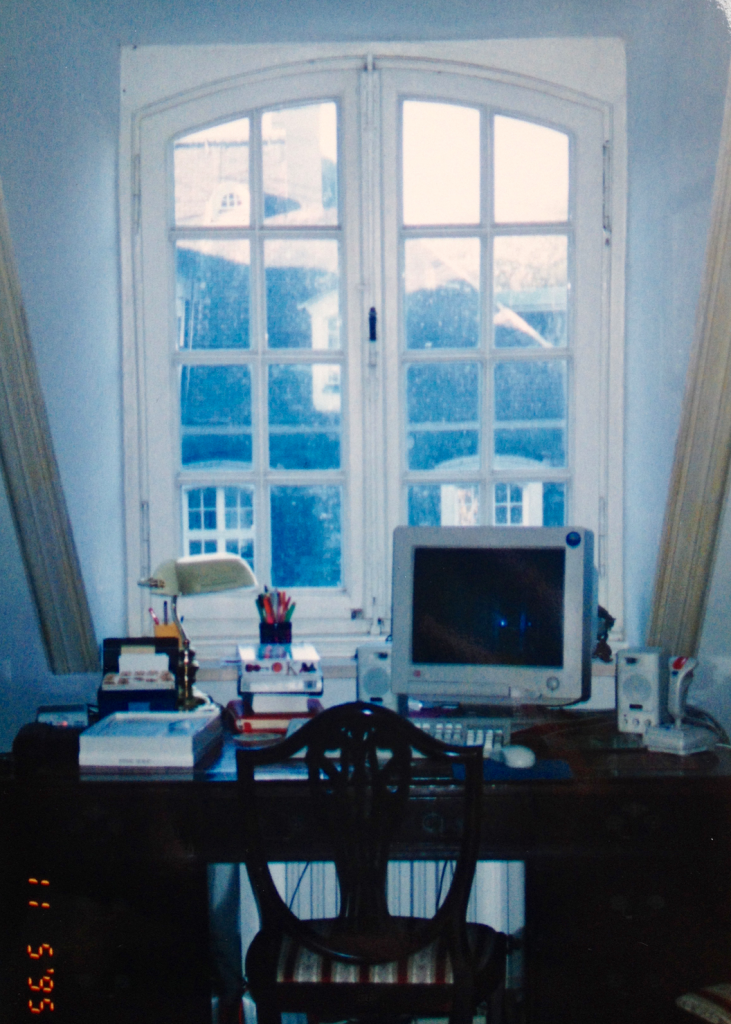
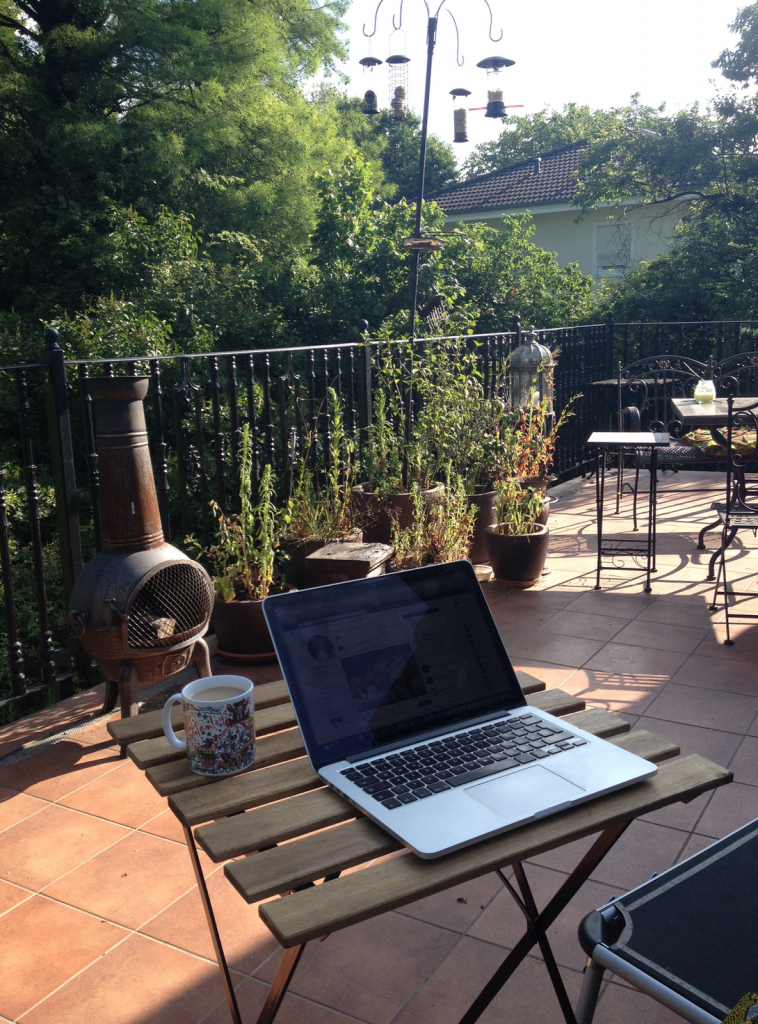
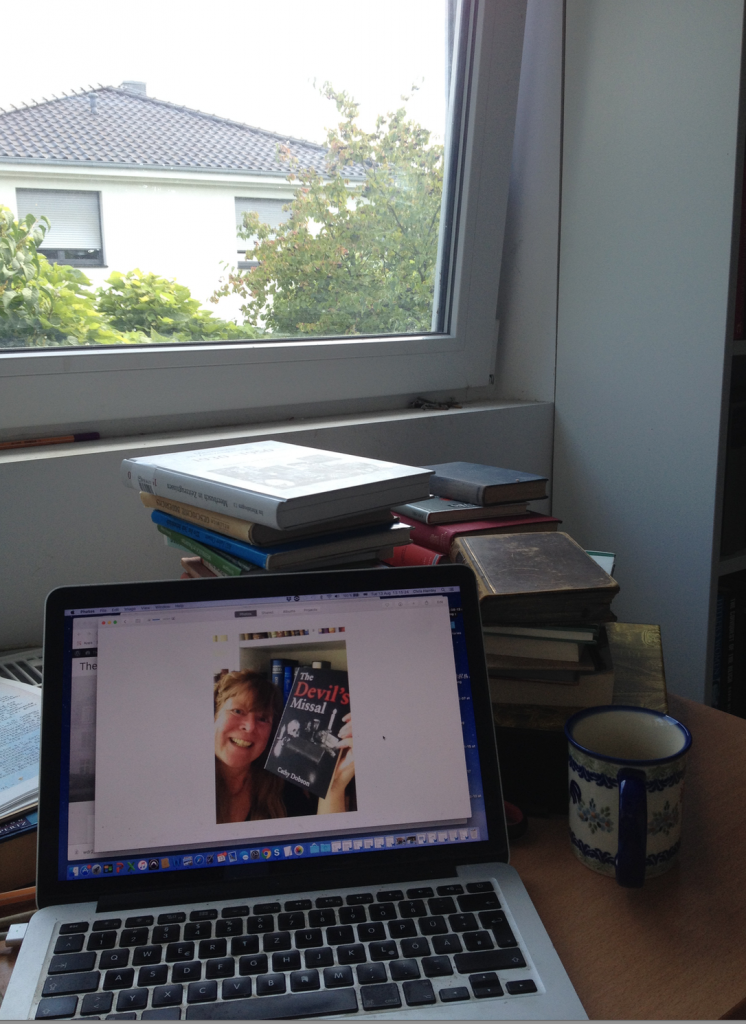
The answer is usually wherever I happen to be at the time. But if the weather allows it, outdoors. Here are three images of some of my favourite writing locations. The first is at Schloß Pesch in Meerbusch Ossum. The other two are in Meerbusch Büderich.
Yet another beautiful old house on the Necklenbroicher Strasse in Meerbusch is about to be torn down to make space for modern semi-detached houses. The building is estimated by the local history society to be 150-200 years old. Until recently it was lived in and well maintained by an elderly couple. Inside it still has the old beams.
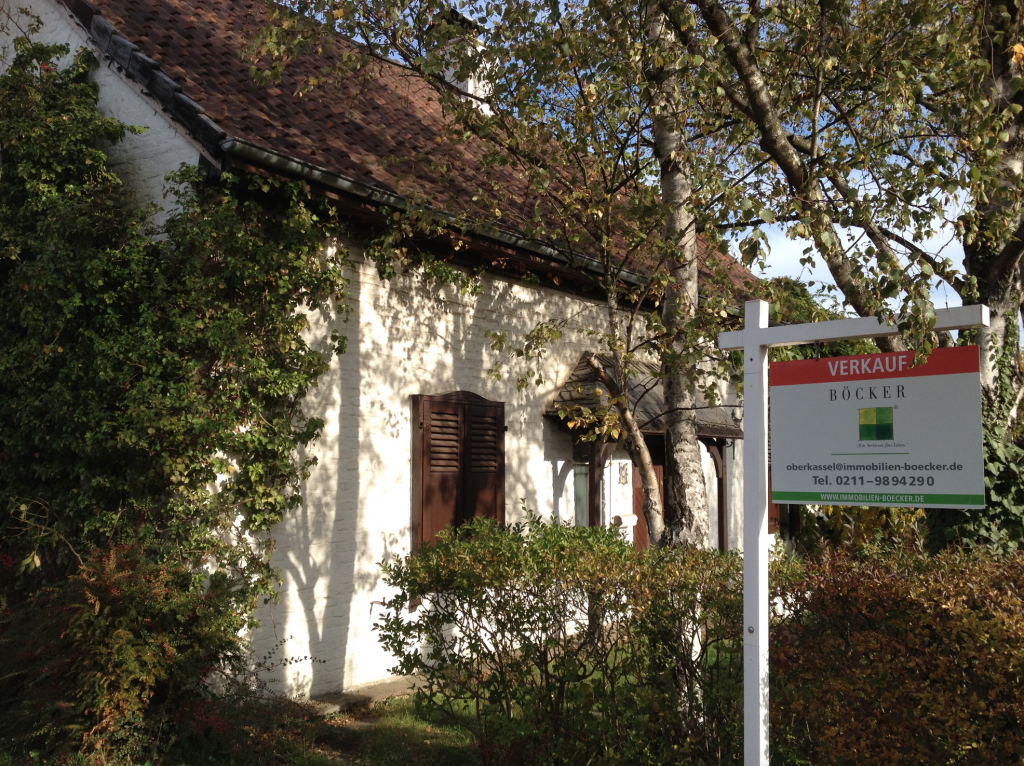
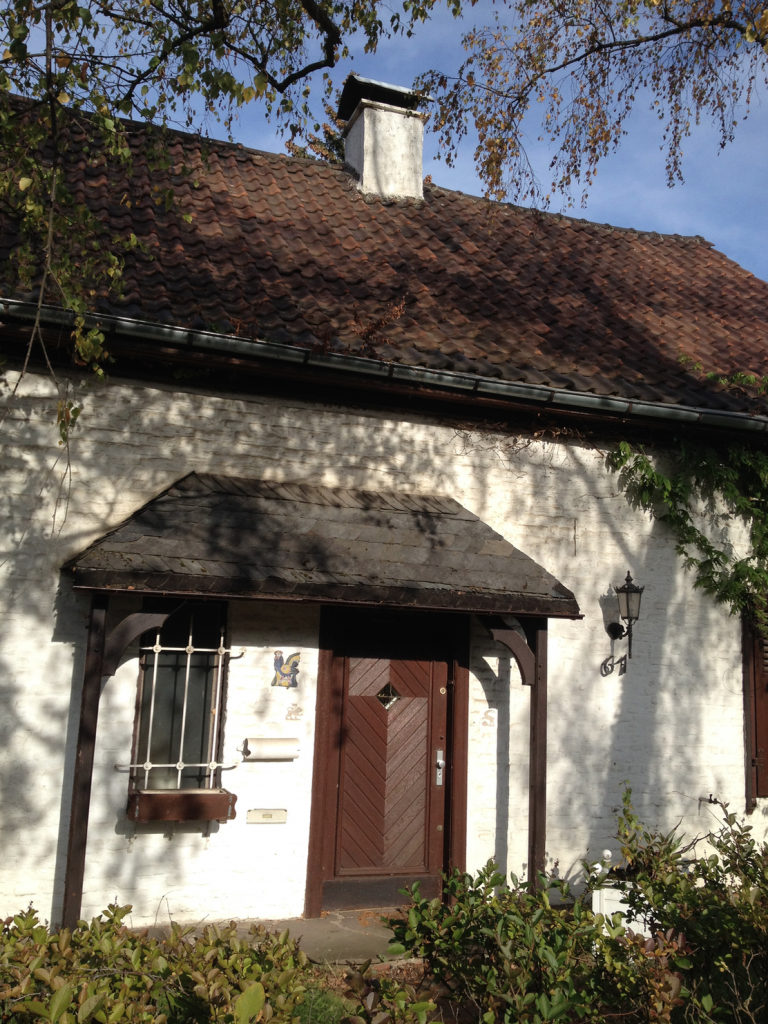
Over the past decade it seems as though nearly every old building in the area has been converted into a modern steel and glass whitewashed cube.
In The Devil’s Missal there is mention of a hidden mural depicting Büderich as a Nazi-idyll in one of the town’s administrative buildings. The mural is said to be covered by plaster now and only an old photograph is known of it. In fact there is evidence that such a mural exists – or existed – as there is indeed a photograph of it in the town’s records.
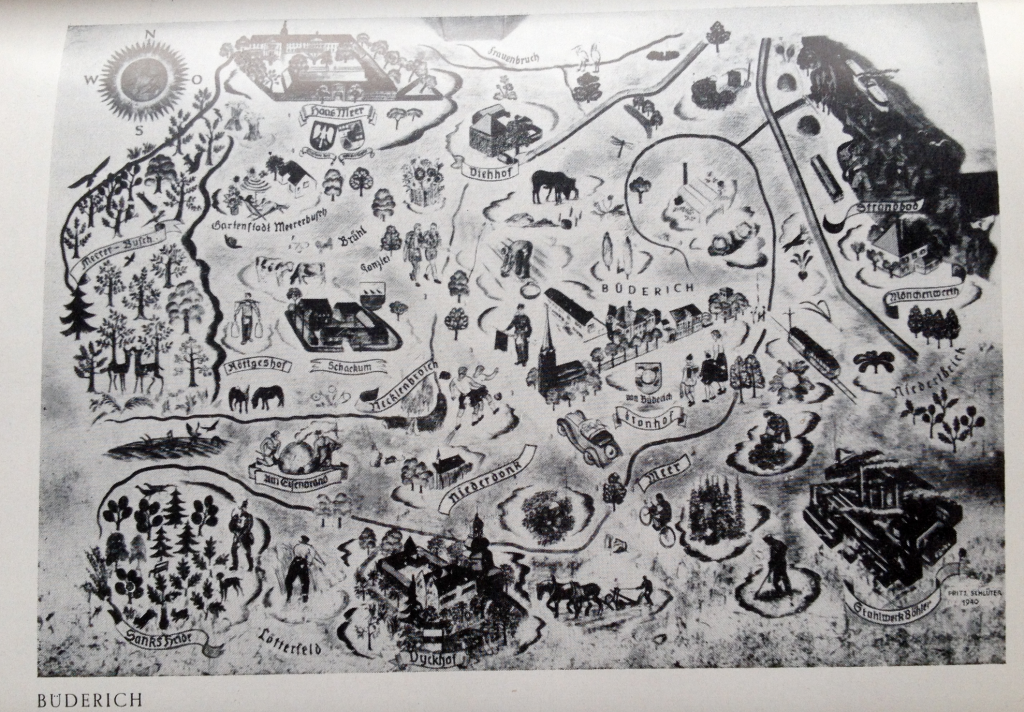
The building where the mural is said to be hidden is the former Hitler Youth building on the main square.
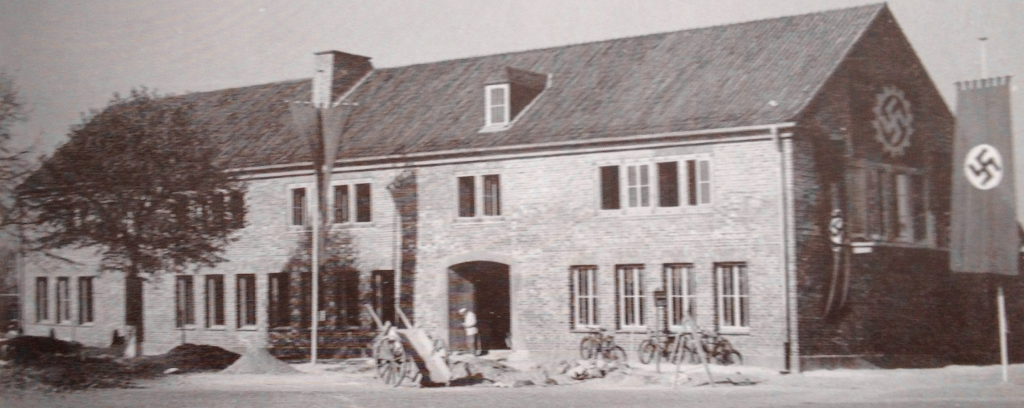
By the end of the war, most of the surrounding buildings had been destroyed during heavy bombardment. Since this picture was taken, many of those empty spaces have been built on.
